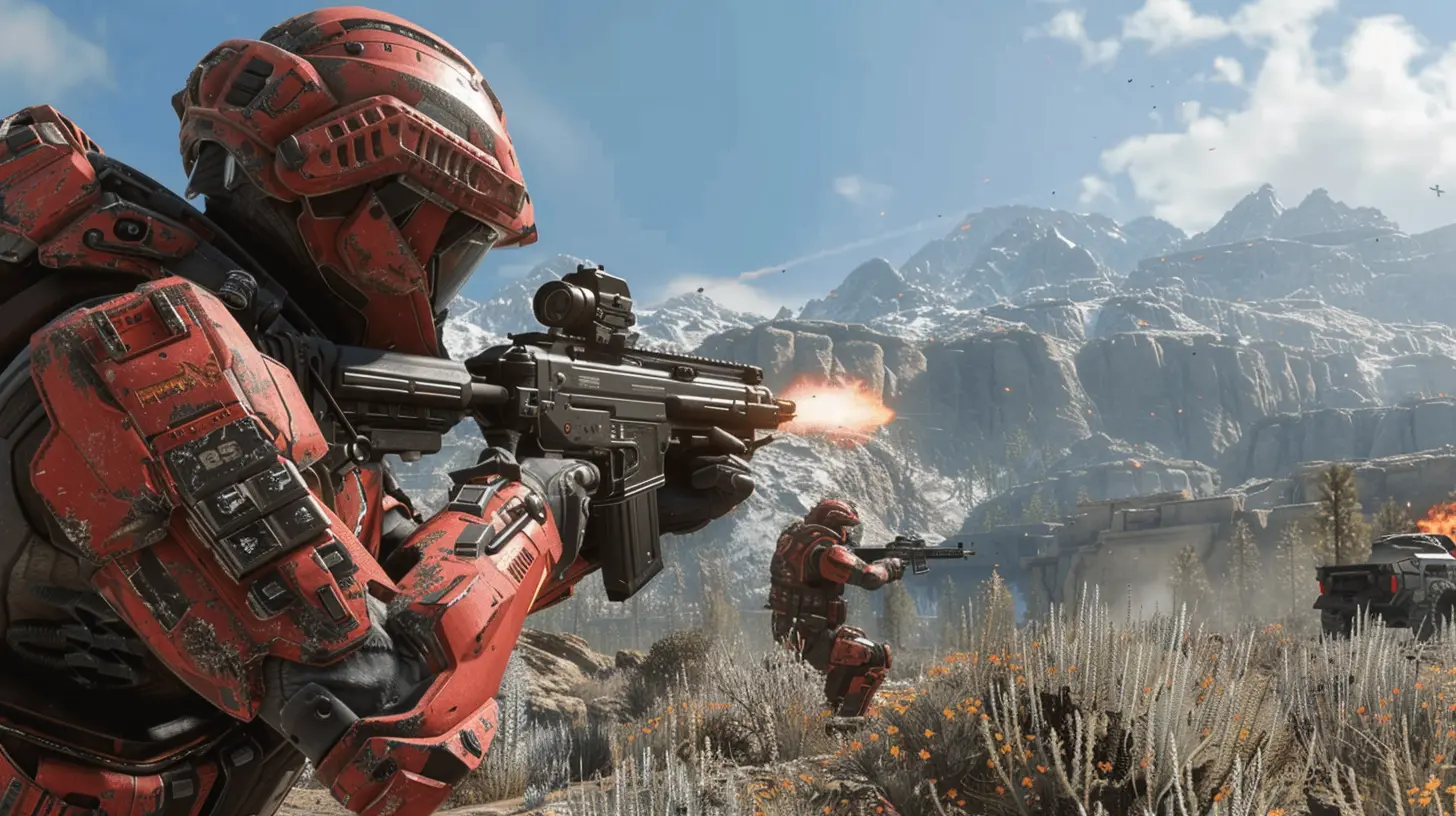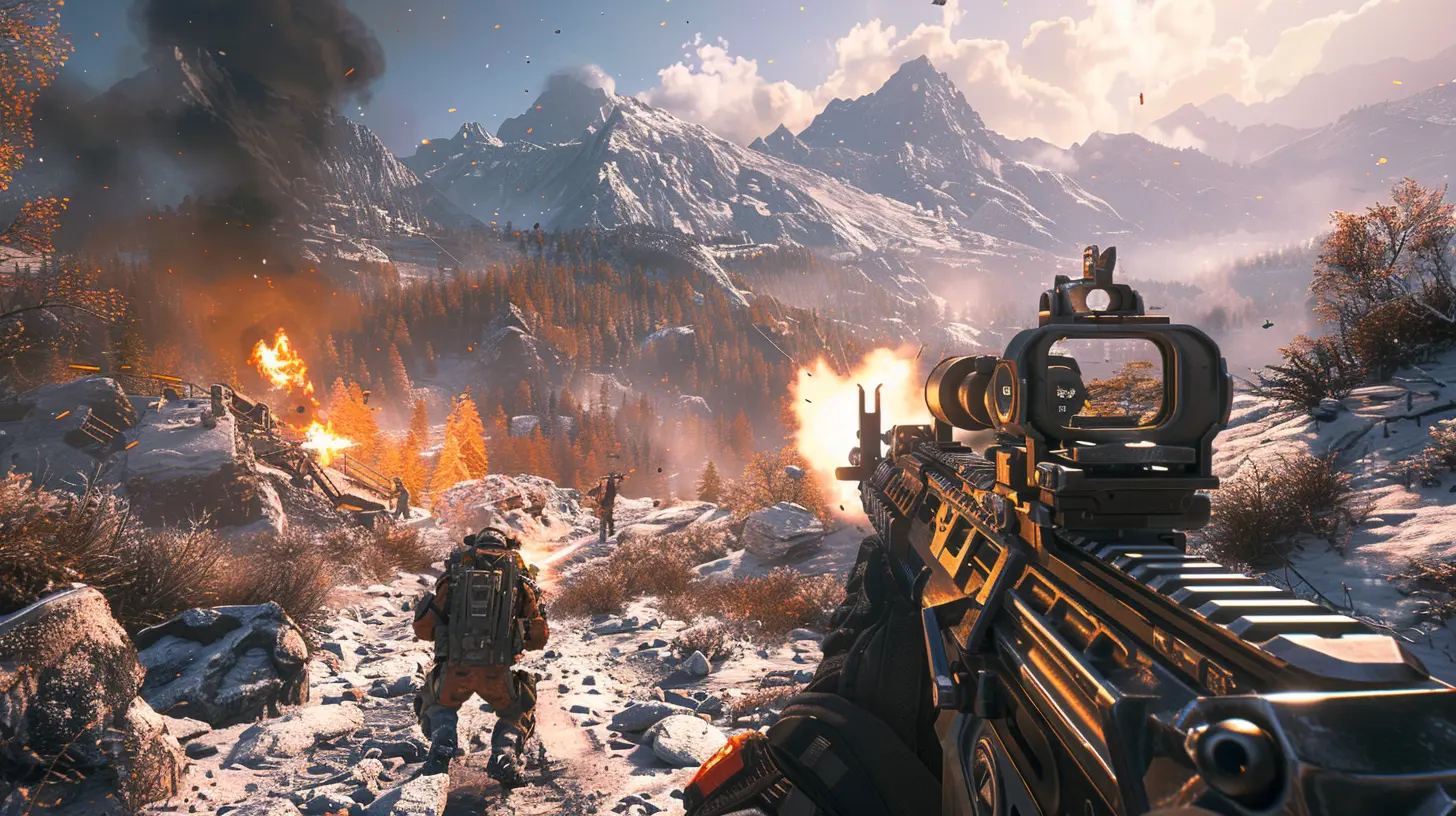Competitive Multiplayer Shooters: Are They Evolving Fast Enough?
20 September 2025
Let’s face it—competitive multiplayer shooters have been a core part of the gaming world for what feels like an eternity. Titles like Counter-Strike, Call of Duty, and Halo have dominated our screens, offering fast-paced, adrenaline-pumping action for nearly two decades. But here's the million-dollar question: are they evolving fast enough to keep up with player expectations? Or are they just slapping on a new coat of paint and calling it innovation? Let’s dive in and explore what’s going on with this beloved genre.
The Foundation of Competitive Shooters
Before we start criticizing the evolution of competitive multiplayer shooters, let’s give credit where it’s due. For years, these games have been the go-to for anyone craving skill-based action. From the precise flick shots in Counter-Strike: Global Offensive (CS:GO) to the chaotic gunfights in Apex Legends, competitive shooters have created some unforgettable moments in gaming history.If you think about it, the basic formula hasn’t changed all that much. You’ve got your teams, your objectives, and your arsenal of weapons. And for the most part, that’s worked just fine. But here’s where things start to get a little tricky—while the foundations are solid, are developers doing enough to innovate beyond the basics?
The Evolutionary Stagnation Problem
Let’s call it like it is: some competitive shooters are stuck in a bit of a time loop. Take Call of Duty, for example. Sure, the graphics keep getting shinier, and they’ve added some gimmicks like battle royale modes (Warzone, anyone?), but the core gameplay still feels pretty much the same as it did a decade ago.This isn’t to say Call of Duty is a bad game—it’s a juggernaut for a reason—but how much longer can these games recycle the same mechanics without getting stale? Players are getting smarter, and they notice when a developer is just phoning it in.
It’s like ordering pizza from the same place over and over. The first few times, you’re thrilled because, hey, it’s pizza! But eventually, you start wondering if you’re ever going to taste something new. That’s where competitive shooters risk losing their player base. 
The Rise of Battle Royales: Enough Innovation or a Fad?
When battle royales like Fortnite and PUBG burst onto the scene, they felt like a breath of fresh air. These games brought something new to the table: huge maps, survival mechanics, and the thrill of being the last one standing. Gamers flocked to them in droves, and for a while, it seemed like the genre was evolving in a bold new direction.But here’s the kicker—how much of that was true innovation? Or was it just a clever remix of mechanics we already knew, like survival games and competitive shooters? Once the novelty wore off, it became clear that even battle royales weren’t immune to stagnation. How many different ways can you drop onto an island and fight for your life before it starts to feel repetitive?
Where Are the Radical Changes?
The truth is, the leap from one game to the next isn’t as dramatic as it used to be. Back in the day, moving from Quake to Counter-Strike felt like a seismic shift. Now? It’s more like a gradual evolution, with each new title making slight tweaks rather than redefining the experience.Take Overwatch 2, for example. Fans had high hopes for Blizzard’s sequel, expecting major innovations that would redefine team-based shooters. Instead, what they got felt more like a polished update of the original. Sure, it’s fun, but is it groundbreaking? Not really.
And let’s not forget all these remasters and remakes floating around. I mean, come on—how many times are we going to buy CS:GO with slightly better visuals? Where’s the risk-taking? Where’s the creativity?
Are Developers Playing It Too Safe?
One reason for the lack of bold innovation might be that developers are playing it safe. Let’s be real—developing a new game is expensive, and publishers don’t want to gamble on unproven ideas. It’s easier to stick with what works, even if it means sticking to the same old mechanics that we’ve seen a thousand times before.But here’s the catch: gamers are starting to notice. They’re craving something fresh, something that shakes up the formula. If developers don’t start taking more risks, they might find themselves losing ground to indie studios or new genres that aren’t afraid to push boundaries.
Balancing Accessibility with Competition
Another tricky challenge is balancing accessibility with competition. We’ve all been there—jumping into a new competitive shooter only to get absolutely annihilated by someone with 1,000 hours of playtime.Games like Valorant and Rainbow Six Siege are incredibly popular, but they come with steep learning curves. While hardcore players love the depth, casual players can feel alienated. Developers are trying to walk a tightrope, making games that are both easy to pick up and hard to master. But in doing so, they sometimes oversimplify mechanics or fail to innovate.
The Power of Community Innovation
One area where competitive shooters ARE evolving is through their communities. Look at Counter-Strike. Mods like Surf Maps and Zombie Escape have given the game a second life, offering experiences far removed from traditional gameplay.And let’s not forget custom games in Overwatch or the creative modes in Fortnite, where players can build entire mini-games within the game itself. These community-driven innovations often outshine what developers are doing, proving that players want more than just copy-paste mechanics.
The Intersection of Esports and Innovation
Here’s another interesting angle: the rise of esports is influencing the development of competitive shooters. Games like Valorant and CS:GO are designed with professional play in mind, which means developers are focusing on balance, map design, and spectator tools.While this is great for the esports scene, it doesn’t always translate to innovation for casual players. In some cases, the focus on competitive integrity can limit creativity, forcing developers to stick to tried-and-true formulas instead of experimenting with new ideas.
The Future of Competitive Shooters
So, where does the genre go from here? If competitive multiplayer shooters are going to stay relevant, they need to start embracing risk and innovation. This could mean incorporating new technologies like AI, creating more dynamic environments, or even experimenting with new game modes that break the mold.Imagine a shooter where maps evolve in real-time, forcing players to constantly adapt. Or a game that uses AI-powered opponents to create unique, unpredictable challenges. The possibilities are endless—it just takes a little bravery (and maybe a bit of crazy thinking) from developers to make it happen.
The Verdict: Evolving, But Not Fast Enough
At the end of the day, competitive multiplayer shooters are evolving, but at a snail’s pace. While there have been some exciting innovations, much of the genre feels stuck in a cycle of small tweaks and safe bets. Gamers deserve more than just incremental updates; they deserve bold, game-changing ideas that redefine what competitive shooters can be.Will we see a true revolution in the coming years? Or will developers keep playing it safe? Only time will tell, but one thing’s for certain: the players are ready for something new. Are developers ready to deliver?
all images in this post were generated using AI tools
Category:
Gaming NewsAuthor:

Madeleine McCaffrey
Discussion
rate this article
1 comments
Idris Gray
Great article! It’s fascinating to see how competitive multiplayer shooters are evolving. I hope developers continue to innovate and enrich our gaming experiences!
September 21, 2025 at 3:03 AM

Madeleine McCaffrey
Thank you! I'm glad you enjoyed the article. Innovation is key to keeping the genre fresh, and it's exciting to see where it goes next!


